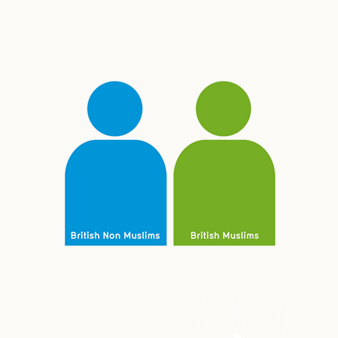


British Muslims
European Muslims
Originated From
Age & Sex
Places of Worship
Ethnic Groups
Defining Identity
What they Say
Profession of Faith
Praying
Social Responsibility
Fasting
Pilgrimage
Muslims in Britain
Impact of Media
Islamophobia
Identity
British & Muslims
Surveys
Interviews
Auto Photography
Research
What young Muslims and other British people feel and think
Young British Muslims are an important and growing component of British society. Policymakers ought to be aware of the potential contribution this growing generation of young British Muslims stand to make in the future of British life. For this publication, interviews and surveys were carried out on British youth, its aim was to gauge the opinions of young people, find out their true feelings and thoughts on Muslims living in Britain.
British Muslims and non-Muslims were surveyed on varied issues regarding identity, the media and general perceptions. Along with more detailed studies on a few people, auto photography was used for this research. Auto photography is when participants take photographs and choose images and representations of themselves. This allows researchers to capture and articulate the ways that guide human action and thought. As a result, auto photography can generate more authentic data since it enables researchers to look at the participants’ world through the participants’ eyes.
Identity
Four young Muslims were asked to take 10 to 15 pictures and photos that best represent their identity as a British person over a period of 7 days. The photographs were taken of things that represented their identity and were derived from their surroundings. They also used publicly available images if they strongly believed that these formed part of their being and identity.
The images on the right show us a glimpse of what these young people hold valuable and important to their lives. They show objects and places that help make up their identity. They also give us glimpses of what young Muslims feel about their identity, the values they hold as British citizens and how they feel about living in Great Britain today.
Some young Muslims showed visual representations of their faith such as wearing the moon and the star, others of places they enjoy hanging out in e.g. the shisha cafes.
Perceptions
Four British non-Muslims were asked to collect or take 10 - 15 photos and images that represent British Muslims from any source that they saw fit. They were allowed to use images from newspapers and websites. The study of the images taken on the right shows what images and photos non-Muslims associate with Islam and Muslims in Britain. These included a few images of terrorists and negative stereotypes that some non-Muslims have come to associate with Islam usually as a result of the way issues are represented in the media.
Some of the negative images included those of Salman Rushdie, radical clerics, convicted terrorists, women wearing the niqab and angry, young Muslim youths. On a more positive note, there were also images of people like James Khan and Amir Khan who are role models for all British youths along with many images of people praying and going to the mosque. There appeared to be a split amongst the 4 people regarding what they perceive about British Muslims.